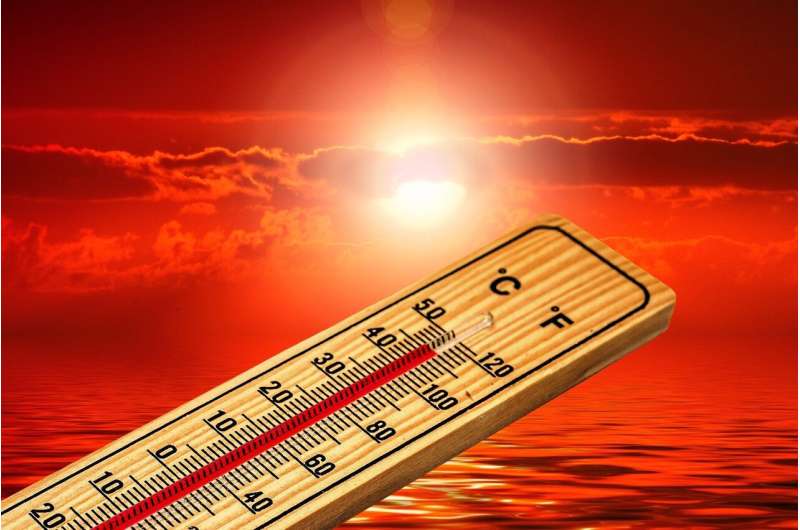Home » Health News »
AI-based research reveals that extreme temperatures fuel online hate speech

Temperatures above or below a feel-good window of 12–21 degrees Celsius (54–70 °F) are linked to a marked rise in aggressive online behavior across the U.S., a new study finds. Analyzing billions of tweets posted on the social media platform Twitter in the U.S., researchers from the Potsdam Institute for Climate Impact Research found hate speech increasing across climate zones, income groups and belief systems for temperatures too hot or too cold. This indicates limits to adaptation to extreme temperatures, and sheds light on a yet underestimated societal impact of climate change: conflict in the digital sphere with implications for both societal cohesion and mental health.
“Detecting hate tweets in more than four billion tweets from U.S. users with our AI-algorithm and combining them with weather data, we found that both the absolute number and the share of hate tweets rise outside a climate comfort zone: People tend to show a more aggressive online behavior when it’s either too cold or too hot outside,” states PIK scientist Annika Stechemesser, first author of the study to be published in The Lancet Planetary Health.
“Being the target of online hate speech is a serious threat to people’s mental health. The psychological literature tells us that online hate can aggravate mental health conditions especially for young people and marginalized groups,” she adds. “We see that outside the feel-good window of 12–21°C (54–70°F) online hate increases up to 12% for colder temperatures and up to 22% for hotter temperatures across the U.S.”
The well-tempered tweet: Fewest hate tweets at 15–18 °C (59–65°F) across the U.S.
To arrive at these findings, the authors used a machine-learning approach to identify approximately 75 million English-phrased hate tweets in a data set consisting of more than 4 billion tweets posted on Twitter in the U.S. between 2014 and 2020. Subsequently, the authors analyzed how the number of hate tweets changed when local temperatures increased or decreased. In defining hate speech, the researchers were guided by the official UN definition: Cases of discriminatory language with reference to a person or a group on the basis of their religion, ethnicity, nationality, race, color, descent, gender or other identity factor.
Across the U.S., the authors found low levels of hate tweets in a “feel-good window” of 12–21°C (54–70 °F); the minimum of hate tweets is reached for temperatures between 15 and 18°C (59–65°F). Temperatures hotter and colder are linked to increases in hate tweets. The precise feel-good temperature window varies a little across climate zones, depending on which temperatures are common. Temperatures above 30°C (86 degrees Fahrenheit) are, however, consistently linked to strong increases in online hate across all climate zones and socioeconomic differences such as income, religious beliefs or political preferences.
This points to limits of temperature adaptation capability: “Even in high-income areas where people can afford air condition[ing] and other heat mitigation options, we observe an increase in hate speech on extremely hot days. In other words: There is a limit to what people can take. Thus, there are likely limits of adaptation to extreme temperatures and these are lower than those set by our mere physiological limits,” says Anders Levermann, head of Complexity Science at the Potsdam Institute, researcher at the Columbia University in the U.S., and co-author of the study.
The hidden climate impact: Mental health
The consequences of more aggressive online behavior can be severe, as hate speech has been found to have negative impacts on the mental health of online hate’s victims. It can also be predictive of hate crimes in the offline world. “For centuries, researchers have grappled with the question of how climate conditions affect human behavior and societal stability,” Leonie Wenz, working group leader at the Potsdam Institute who led the study, explains.
Source: Read Full Article


